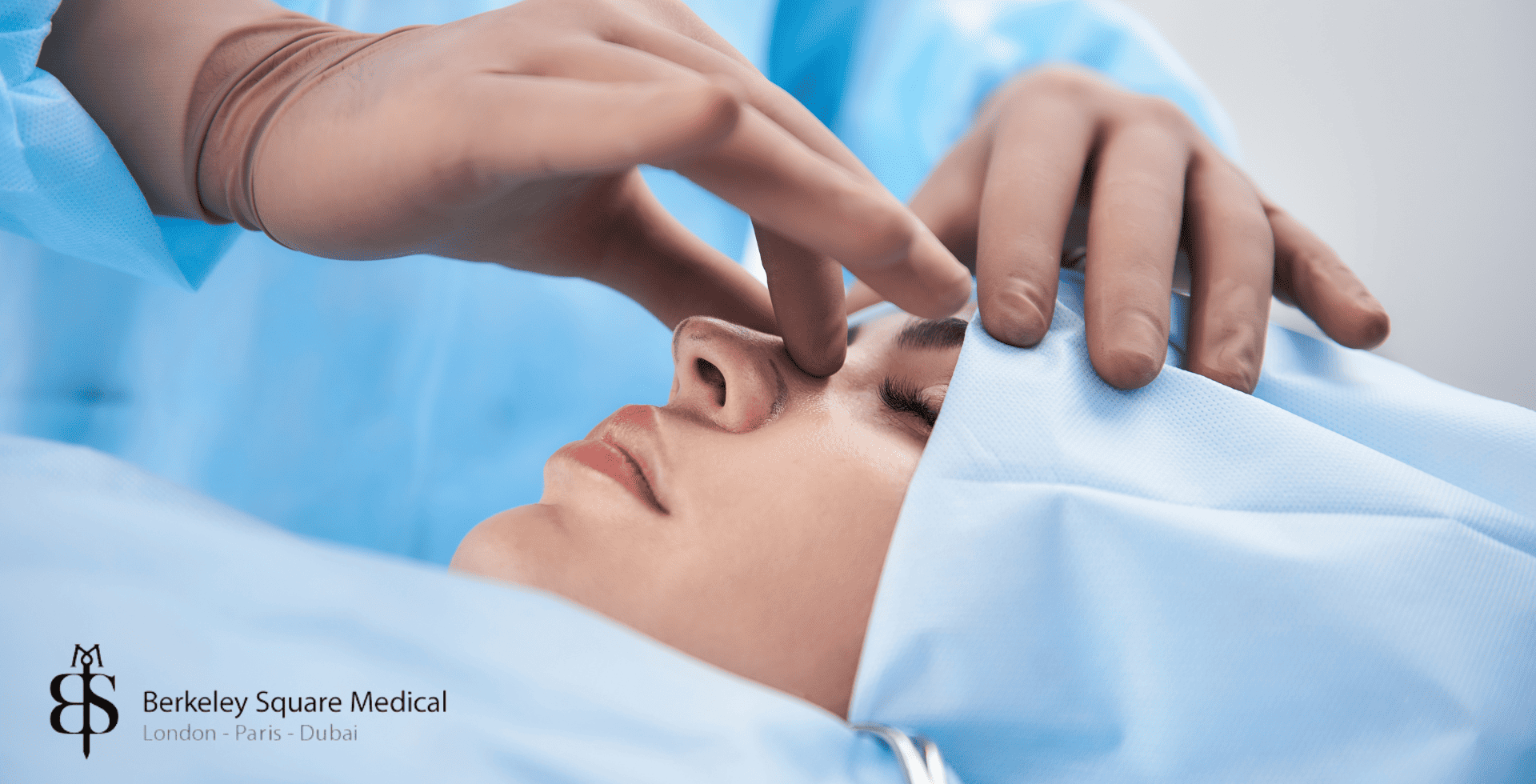
When your Surgeon puts a cast on your nose to protect it and to help the swelling go down after rhinoplasty, you may be wondering how long it will take for that cast to come off.
Another common question is what to expect after the cast is off and if it stops protecting your freshly operated nose.
This blog post will answer these questions and more!
The time your cast needs to remain in place is usually between 5 to 8 days following the nose surgery. The exact time depends on the type of surgery you had.
If your nasal bones had to be fractured and re-centralised, it may require longer protection than if you only had some cartilage removed. However, almost all patients will have their nasal cast removed on day-7 after their surgery.
Your surgeon will schedule your follow-up consultation according to the time your nose needs to heal.
It will be exciting as this will be the first time you can assess the shape your new nose!
Depending on the details of your nose surgery and the healing abilities of your body it may already look presentable or it can be still slightly swollen. If it appears bruised and swollen, don’t worry, this is perfectly normal at this stage. Most of the swelling will disappear within 10-14 days even for people with sensitive skin.
The removal itself will be quick and painless. Your surgeon or nurse will gently peel the tape away and remove the cast. After the inspection of the surgery area and the incisions, you will receive advice for the following days ahead.
You might feel like your nose is now exposed but you’ll quickly get used to it being on fresh air again.
Depending on your healing progress, your surgeon may advise tape on your nose for an additional week or so. This is to help the swelling go down by compressing the skin, if safe to do so.
It does not happen often but the cast may become loose before it’s time to remove it. The most common reason is that swelling to your nose has contriduted to the cast peeling, but another common reason is oily skin on the nose that causes the cast to become less adhered to the skin.
If this happens to you, carefully apply an additional layer of tape to the top of the existing one.
Position it in a way that half of it covers the old tape and the other half sticks to your face near the cast. Do not remove it before you are instructed to do so by your surgeon even if it becomes loose.
Take extra care to keep it dry which should ensure it does not come loose again.
Your surgeon uses strong tape to keep the cast in place but if it becomes loose, the best thing to do is contact your clinic team.
If you don’t have help, cut a piece of fresh tape and apply it over the old tape across the cast. Make sure it is longer than the previous one, you will want an additional cm or 1/2 an inch.
Gently place the cast back to the same position it was before while holding up the edges of the new tape. Once it’s in position, smooth the tape on either side so it sticks to your face. Carefully check to see if the adhesion is strong enough to keep the cast in place.
If you have help, you can start with placing the cast back to its position and ask the other person to carefully place new tape covering the edges of the old tape.
If you are told to remove the cast at home, these are the steps you need to follow:
Cast removal is not painful. Depending on the state of the healing of your nose it may feel sensitive but there should be no pain.
We do not recommend applying ice on your nose after cast removal. Ice is useful during the first day after the procedure to help the swelling go down. Once the cast is removed, icing might put pressure on and damage your still sensitive nose if you are not careful.
Once the splint or cast is removed you will be able to shower as usual while taking care not to push hard on your nose.
Once the cast is removed, follow the steps we have outlined in this article dedicated to nose cleaning after surgery.